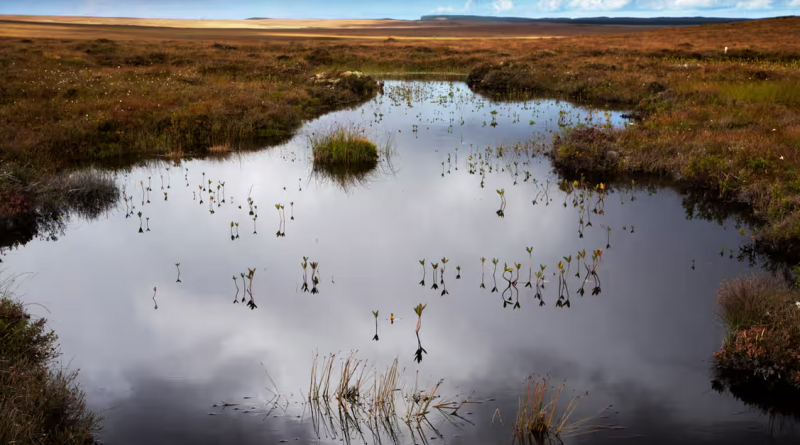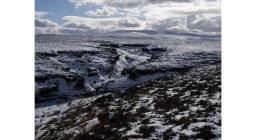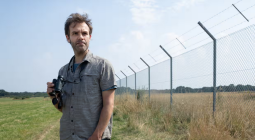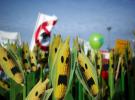Bog ugly, but totally magnificent: peatlands are finally getting the respect they deserve

For centuries, peatlands have had a bad reputation. Possessing neither the majesty of the mountains nor the pastoral beauty of a meadow, they have been tarred as dangerous, ugly and useless. Travellers have long feared being swallowed into their murky depths: “If his foot slip … it is possible he may never more be heard of,” wrote the cleric William Gilpin in 1772, expressing a common sentiment at the time.
But now the image of this ecosystem is finally on the mend. Unesco has inscribed the Flow Country as a world heritage site – the first peatland to make the list. From now on, this 190,000-hectare (470,000-acre) expanse of the Scottish Highlands will sit alongside the Great Barrier Reef and the primaeval forests of the Carpathians as a landscape of international significance.
Perhaps most important of all, the Flow Country was chosen for its natural characteristics: for the outstanding assemblage of plants and animals that inhabit the region. After centuries of derision, peatland is no longer considered a blot upon the British Isles, but an ecosystem as magnificent and complex as the brightest coral reefs or the deepest forests.
The inscription recognises, too, that these peatlands are not humankind’s enemy but an important ally in the fight against climate crisis. Carbon has been accumulating in the soils of the Flow Country for about 8,000 years, when wetter weather initiated the formation of peat. To avoid any further global heating, it is vital that it stays there.
This focus on biodiversity may seem obvious in a place so wild and unpopulated but even somewhere like the Flow Country, which has been visited and shaped by humans since the Mesolithic era, it was not a foregone conclusion. Indeed, it comes as a welcome contrast to the vast majority of the UK’s other world heritage sites, which were chosen not for their natural value but their cultural significance alone.
Prioritising culture might make sense for places like Stonehenge or Durham Cathedral, but the Lake District? Not so much. The Cumbrian fells are remarkable for their natural geography: their deep valleys, rugged peaks and glacial lakes. The history of human activity there is fascinating, encompassing everything from Neolithic axe-makers to Romantic poets, yet the imprint of people has only ever been a shifting veneer upon an inherently sublime environment.
Yet, when the park gained world heritage status in 2017, it was largely upon the basis of its relatively recent tradition of sheep farming. Many conservationists were aghast, pointing out that these sheep had contributed to widespread overgrazing. They worried that the designation would stifle efforts to return an element of wildness to the landscape, and prevent the culture of the Lakes from evolving as it always has. But perhaps they shouldn’t have been surprised: after all, the decision reflected a long-held anthropocentrism in how the English perceive the natural world.
In this context, the designation of the Flow Country looks even more profound. It represents a reversal not only in our perception of peatlands but of nature itself. Unlike the Lake District, the worth of this ecosystem has been calculated upon its contribution to species other than our own. It prioritises not sheep, but sphagnum moss and sundew. This approach aligns with the growing movement to recognise the rights of nature: to reframe the natural world as something more than a collection of raw materials.
It is particularly poignant that the Flow Country should see itself at the centre of this shift. It is, after all, a landscape that has suffered more than most at human hands. In the 1980s, the UK government was still offering tax incentives for commercial forestry on deep peat. Many proved willing to take the money, draining the soils and planting non-native Sitka spruce, causing irreparable damage to biodiversity and underground carbon stores across vast swathes of the Highlands. The recognition of peatlands as valuable in their own right is long overdue.
None of that is to ignore the role that humans have played in the Flow Country, now or in the past. If the landscape seems wild and unpeopled, that is largely because the Highland Clearances emptied it. But humans have been living in and shaping the environment there for thousands of years, doing all the things that humans do: hunting, farming, burning, burying, building. The draft management plan recognises that humans still have a role to play in the Flow Country, and world heritage status has largely been welcomed as an opportunity to bring jobs and sustainable development to the region.
Here, at last, could be an opportunity to do things right. To recognise that no landscape in the UK can be considered in isolation from its culture, while also remembering that the human story never unfolds alone. On the stage of the Flow Country, nature has finally been reassigned its leading role






